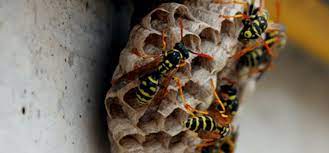There is a recent phenomenon where beehives are being removed from homes around the country. The homeowner will go about the process of removing the beehives themselves but soon find that they are unable to complete the job on their own, and have to contact professionals for help. There is a sudden surge of bee hive removals going on across America and many people are wondering whether or not this should be allowed. Let’s discuss everything regarding a guide to finding wasps in your property.

What You Need To Know About Bee Removal
Pest Treatment is a necessary service for many homeowners. Not only are bees a nuisance, but they can also be dangerous if not removed correctly. Here are some key points to keep in mind when removing bee hives:
1. Always use safe methods when removing bees. Do not USE any type of pesticide or other chemicals, as this could be dangerous to both the bees and you. Make sure to wear protective gear, including gloves, a face mask, and long pants.
2. If possible, try to remove the hive from the inside before trying to remove it from the outside. This will reduce the risk of injuring yourself or damaging the hive. Once you have located the hive, use a crowbar or an appropriate tool to break open the box and release the bees.
3. Clean up any residual honey and pollen residue immediately. This will help prevent further bee infestations in your area.
How To Find And Kill The Hives
If you are looking to remove a beehive from your property, there are a few things that you need to know in order to successfully remove the hive. The first thing that you need to do is survey the area where the hive is located. This will help you determine the best way to approach the hive and also help you avoid any potential hazards. Once you have surveyed the area, it is time to find the entrance of the hive. This can be done by using a bee brush or a tool designed specifically for this purpose. Once you find the entrance, use a beekeeping tool or a sharp knife to cut through the roof of the hive. Be sure to wear protective gear, including gloves and a veil, when removing the hive. After removing the hive, be sure to dispose of it in an appropriate manner.
The Potential Health Risks Of Bee Removal
When it comes to bee removal, there are a few things to keep in mind. First and foremost, always wear protective gear when handling any type of insect. Second, be very careful when selecting a bee removal service. There are many unscrupulous companies out there that will try to charge you an exorbitant amount for services that are not up to par. Finally, be sure to research the potential health risks of removing bees before getting started. Here are a few things to keep in mind:
-The honeybee is an important part of the agricultural industry and is responsible for pollination of many crops.
-Bees are not aggressive and will usually flee if they feel threatened. However, they can become defensive if they feel their hive is being invaded or if they believe they are being harmed.
-Hives can contain numerous diseases that can be harmful to humans, including varroa mites, Nosema ceranae, and Africanized bees.
-It is important to properly clean and sanitize any equipment used when removing bees, as well as any surfaces where the bees were dwelling. Failure to do so could result in the spread of harmful bacteria and viruses.
Conclusion
If you are experiencing problems with beehives, it is important to remove them as soon as possible. This will prevent the bees from producing honey, and may also result in the death of the hive. If you are not experienced with beekeeping or if you have concerns about removing a beehive safely, please contact an experienced beekeeper for help.
